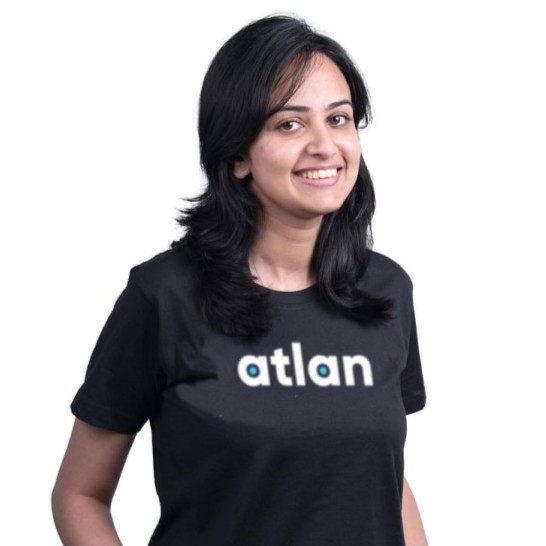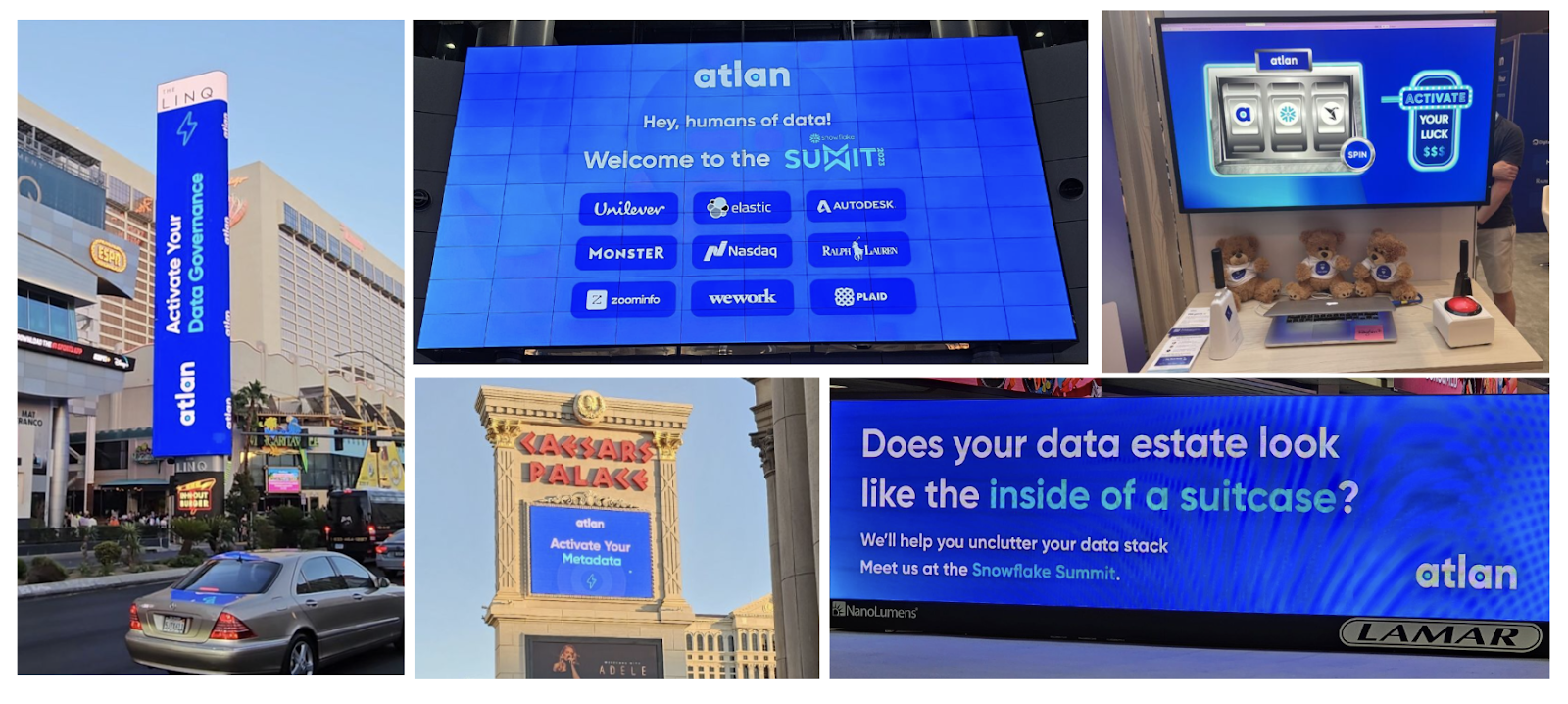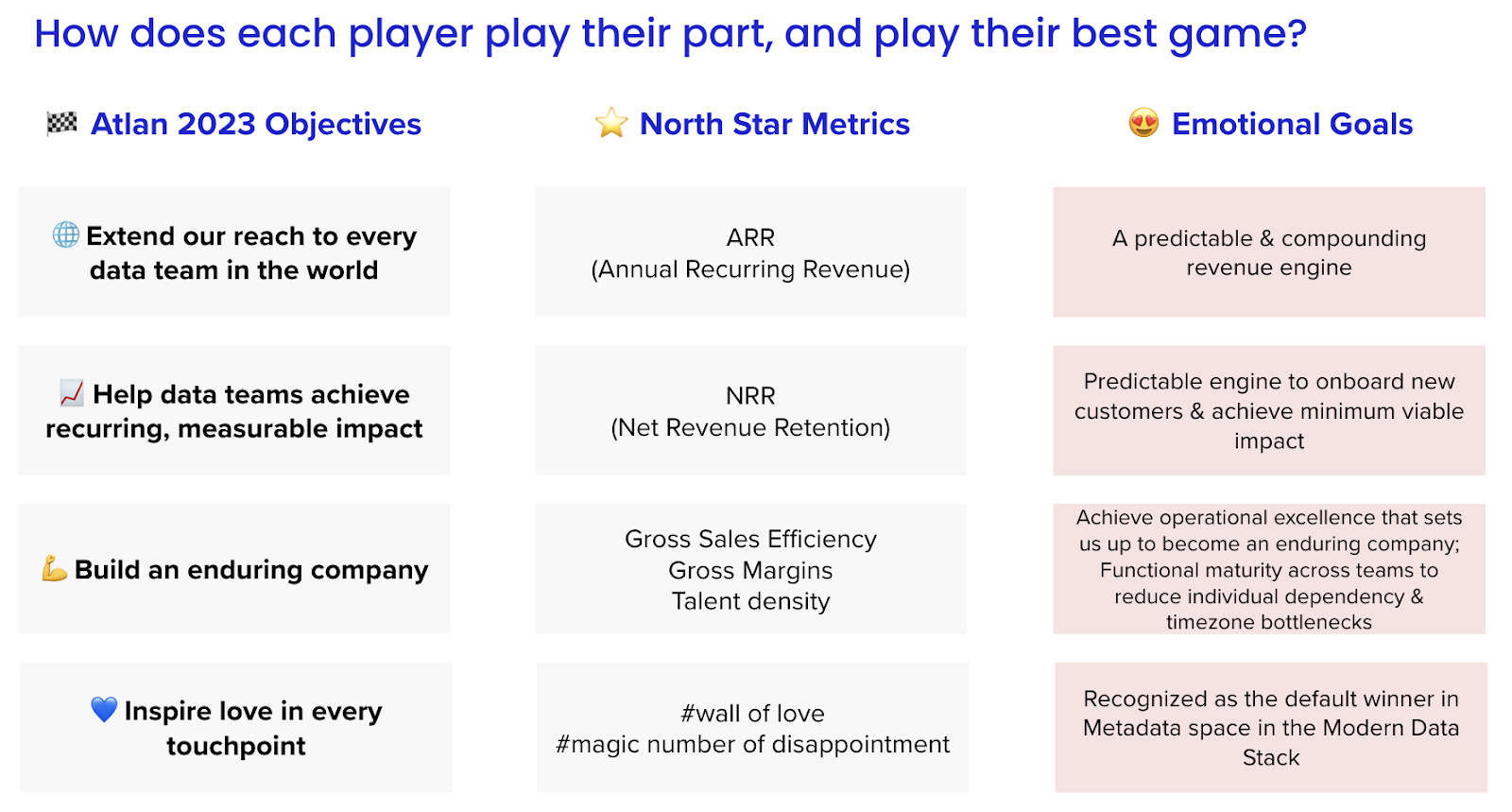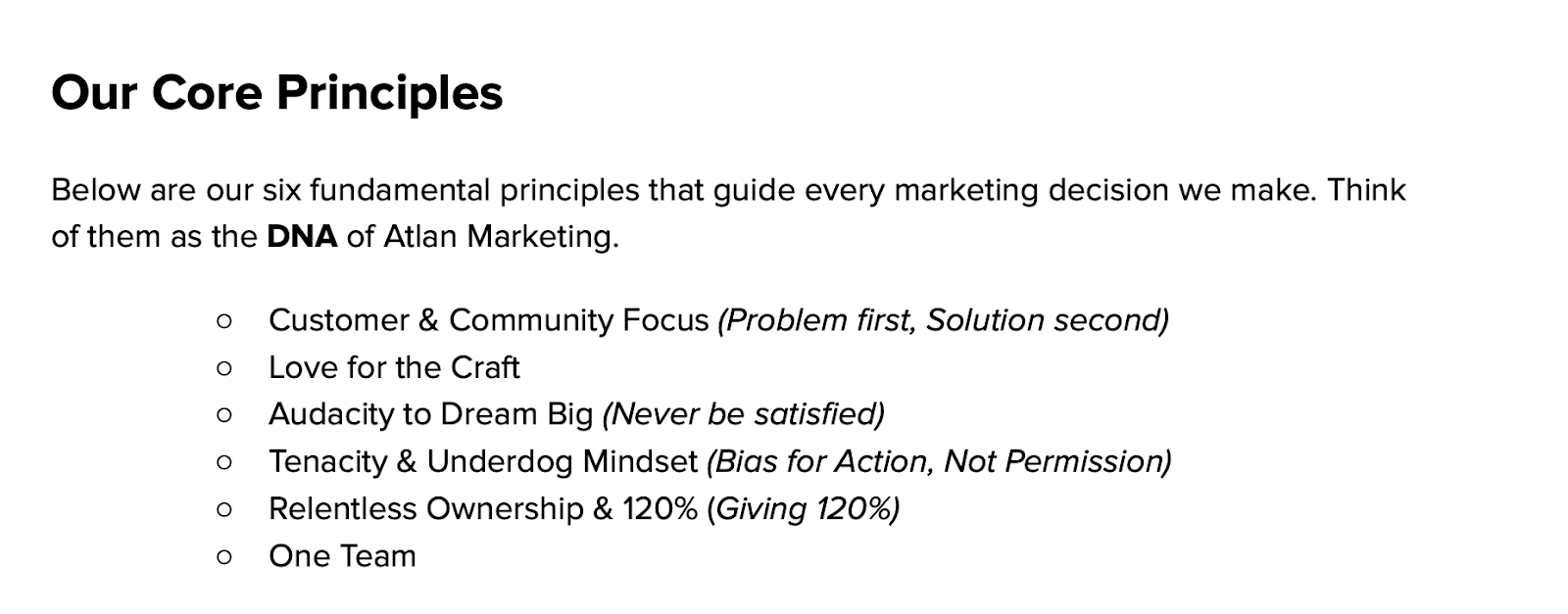Land & Expand is a series of articles for founders building from India to the world. In this chapter Prukalpa Sankar, founder and co-CEO of data governance platform Atlan, unpacks why winning the category narrative became a company-wide priority - and how they built a brand that matched that ambition. From internal charters to emotionally-driven goals, this piece offers a behind-the-scenes look at the systems, choices, and belief structures founders can borrow when shaping their own category.
Cloud-based data storage company Snowflake went public in September 2020. At the end of trading on day one, the company’s valuation soared to $70 billion, up five times from February that year.
Things changed overnight for hundreds of startups. Data infrastructure became one of the hottest categories in tech. Everyone wanted a piece of the pie. Founders rushed in to build the next breakout data company. Investors were backing new startups every week.
And in the milieu, was Atlan.
For Atlan, a data collaboration startup in Bengaluru, this was the inflection point. “The question had shifted from why would anyone need Atlan to who will lead this space?” recalls Prukalpa Sankar, co-CEO of Atlan.

It became clear to Prukalpa: they may have built the best product in the space, but to win they had to win the category narrative.
“We had a great product, team and customers. But everything had changed.” The usual tactics to stand out were not going to cut it. So they did something counterintuitive.
Prukalpa made an unconventional bet on ‘winning the narrative’. With no key performance indicators (KPIs) and a five-member team of misfits, she set out to shape and own the story of an entire category.
Winning the Narrative: A Strategic Bet
As one of Atlan’s early sales leaders put it,
“Great products win the game. But great companies that win the narrative, win the championship.”
In 2018, Atlan was a new startup trying to build a category-defining business. Most data teams hadn’t heard of them and were unsure if they even needed a data collaboration product. So what did Atlan do to go from being the new kid on the block to becoming synonymous with the category?
“From the very early days of Atlan, we invested in the foundation of the brand. We needed to look and feel like a company that the best data teams in the world will want to partner with,” said Prukalpa.
That conviction shaped everything - from messaging to design to their website. This meant setting high goals for every aspect of the brand. While building their website, they looked at the best in the world. Stripe became the north star. By their admission, the site they built was nowhere close to Stripe, but it was significantly better than 95% of websites from startups of a similar size and stage. The goal was to look and feel like a player leading the category.
To that end, Prukalpa pulled out all stops. The startup paid $25,000 to get a five-letter dot-com domain.
“We wanted a name that felt timeless and could support our ambition of becoming a multi-product company,”
She tapped personal networks to convince a high-calibre product designer to work for them for two months. The UX was obsessively detailed, down to choosing between a hundred shades of blue. The goal wasn’t just aesthetics; it was to signal trust and authority.
The team also embraced the idea of “punching above their weight” and it helped them cut through the noise in a crowded space.
“It's the small things. It's the really small things. But we truly believe that with an amazing marketing team, you can really punch above your weight. It can be a 10x function.”
Years later, that brand conviction scaled. Take their campaigns at Snowflake Summit over the years. From bold OOH billboards at the Las Vegas airport to a plane flying over San Francisco, the team made sure the brand was impossible to miss. They made cheeky T-shirts that said “My AI agent has trust issues” as part of a fictional ‘AI Agents on Strike’ campaign, handed out nine-page newspapers instead of usual brochures, and also had a flashmob dancing to Atlan Funk, a spin on Bruno Mars’ Uptown Funk. They even aired their ‘Don’t Do AI – Agent Strike’ video before the Snowflake keynote.

Time and again, Atlan introduced new language that shaped how the category was understood. They coined the term “third-generation data catalog” to signal an evolution from legacy tools, anchoring their product in a new wave of usability, flexibility, and collaboration. The phrase caught on. Soon, competitors were using it in the messaging too, folding into the very narrative Atlan had seeded.
Then came “active metadata.” What began as an internal product philosophy became the rallying language for an entire industry. Analysts cited it. Prospects searched for it. Startups added it to their pitch decks. Atlan hadn’t just launched a feature, they’d named the future.
As Tomasz Tunguz of Theory Ventures put it: “The first company to reach the buyer gets to define their expectations—from key features to pricing and perceived gaps in competitors’ products.” Everyone who follows must either conform to that narrative or spend heavily to reshape it.
Setting Emotional Goals
Marketing teams in enterprise product companies are typically organised around revenue-centric goals like leads, pipeline and Customer Acquisition Costs (CAC). Every dollar spent is expected to tie back to a number, ideally one that moves the revenue needle.
So, when Atlan created a narrative team with no KPIs, no pipeline targets, and no hard conversion goals, it went against the grain of how enterprise marketing is normally structured. In that respect, Prukalpa was building a unique company.
“We’re unique that way. We have emotional goals as core business objectives.”
Each year, the team sits down not just to plan OKRs or growth targets, but to write emotionally resonant goals that matter to them as the people behind the brand.
Sometimes, those goals are delightfully lighthearted, like “plan a team beach retreat” or “get everyone matching socks.” Other times, they’re big and bold: “empower the most amazing data teams in the world” or “build a company people are proud to tell their friends about.”

For 2020, the year that everything changed, winning the narrative was an emotional goal.
It was shared with the board and tracked every quarter in a red-yellow-green framework (Red = substandard performance, yellow = marginal performance, green = target performance).
Atlan also documented what they meant by “winning the narrative”, who it was for, and how they would do it. The team wrote a charter that laid out their ambition in specific, actionable terms. They broke the narratives down to six key themes.

Everything flowed from this memo. Each launch was treated like a storytelling opportunity that spoke along these themes. The team committed to doing “slightly insane things” to make each one unforgettable. They created high-quality content, carefully crafted experiences, and small brand cues that reinforced the narrative.
Interestingly, this wasn’t a traditional marketing team. It was just five people working closely with Prukalpa, doing whatever it took to help the brand stand out. None of them were conventional marketing hires; in fact, they were originally hired for founder’s office roles. But they came together as a high-context, high-conviction crew: sharp, scrappy, and fully aligned on the mission to win the narrative.

“Everyone wanted to do work that’s never been done before. That pushed the limit, especially in our category.” adds Ritik Chopra, a member of the original narrative team. “Marketing has always been an important function at Atlan, which is a result of Prukalpa's understanding of how important marketing is and then making sure that the company understands it as well.”
All their efforts were focused towards one thing: winning the hearts and minds of the people who mattered most: customers, data leaders, and Atlan’s community.
Human-First Branding: Making Data Personal
From naming their blog ‘Humans of Data’ to putting Atlan’s team on the Nasdaq billboard, people have always been at the center of Atlan’s branding. Much of the company’s storytelling stems from its journey as a data team, and the fact that they built Atlan for their team first.
“We have stories to tell about being a data team ourselves. So our brand philosophy is a little bit of leaning into who we are and why we do what we do.”
This philosophy shaped a brand voice that’s unmistakably human, clear, approachable, and grounded in real experiences. Every piece of communication from Atlan is written in conversational language and is free of buzzwords, fluff, or corporate jargon.
This was evident in the first community event Atlan hosted. The experience was designed to pamper data professionals, complete with massage chairs with messaging focused on acknowledging the everyday struggles of data teams. It was not about not selling to them.
As the company began to scale, this human-first approach only grew stronger. Brand campaigns became increasingly people-centric, from LinkedIn videos featuring team members speaking directly to the camera, to using internal footage from a town hall to announce their Series B funding.
One of the most memorable expressions of this approach came when Atlan was named a Gartner Cool Vendor in DataOps for 2020. Instead of a traditional announcement, the team launched the Humans of Atlan campaign, celebrating employees & alumni. Their pictures lit up a Nasdaq billboard in Times Square and the moment went viral as team members, their families, and friends across the world shared it, turning a corporate milestone into a deeply human story.
Outcomes You Can’t Measure
Putting humans at the center of the brand has helped Atlan build trust and relatability with its clients. But human-centric initiatives come at a cost of both time and resources. Naturally, this raises the question: Does branding really impact business revenue? And if so, how do you measure it? Prukalpa’s stance is clear.
“You can’t build an ROI model for brand and anyone who tries is faking it.”
At Atlan, the impact of branding has hit the right emotional notes with perceptive buyers has been more qualitative than quantitative. It helped the company look and feel like the biggest player in the space long before they actually were. That perception opened doors, enabling them to land partnerships early, appear on the radar of top-tier customers, and show up where their competitors aspired to be.
While this kind of influence is hard to measure in dashboards, its impact was undeniable, especially in high-stakes sales moments. In one critical meeting with a large enterprise prospect, nearly 30 stakeholders were in the room, grilling Prukalpa with tough questions. The energy was tense until the Executive Director walked in and said, “I saw you at Snowflake Summit. I visited your booth and spoke with you last year.” That single moment changed the tone of the meeting.

Beyond customers, the brand helped Atlan consistently punch above its weight, opening doors that should’ve been locked, and pulling them onto stages they technically “weren’t ready” for yet. At their very first conference, the CTO of Accenture walked in. For a young company, that wasn’t luck, —it was branding.
That kind of visibility snowballed. It drew in top talent, built trust with global partners, and created a halo effect that numbers alone can’t explain. Even on the performance front, the results spoke. In year one, nearly 10% of all opportunities came from thought leadership alone—just words, crafted with care, shared with the right people.
Storytelling: The Founder’s Edge
What started as Medium posts grew into a high-signal newsletter that fueled inbound, shaped perception, and reinforced Atlan’s place at the center of its category. And at the heart of it? Prukalpa, still writing. Still storytelling.
“In the early days, around 2021, I would just sit and write long-form thought leadership pieces myself. As we scaled, the same human-first approach began to shape our brand campaigns as well. It’s taken different forms at different stages, but that core has stayed the same.”
In moments of doubt, “Is this the best use of my time?” she found unlikely reassurance.
Nick Mehta, CEO of Gainsight, told her: “I still spend five hours a week writing. It’s the highest ROI thing I do.” Bob Moore of Crossbeam? Same story.
That advice gave them the validation to run with their approach. They refused to believe that great brand-building was only possible in Silicon Valley. That storytelling had to sound a certain way. While others said, “We don’t know how to do that,” Atlan asked, “What if we just did it our way?”
And they did. With heart, humour, sharp wit and sharper execution.
Because here’s the thing: brand isn’t just what you say, it’s what people feel. It’s being remembered long after the meeting ends. It’s when a customer says, “We’ve seen your content, been to your booth, and we believe in what you believe in.”
When done right, branding doesn’t follow traction. It creates it.
If you made it till here, we’ve a treat for you. Here’s a cheatsheet of Atlan’s most tactical (and surprising) moves to win the category narrative straight from Prukalpa’s playbook.
%20(1).png)
Penned with ❤️ by Z47 & SaaSBoomi.
If you liked this, check out our previous chapters on Rocketlane’s path to PMF and Atomicwork’s credibility-first fundraise.


.png)
.png)

.jpg)


%20(1).png)
.svg)




